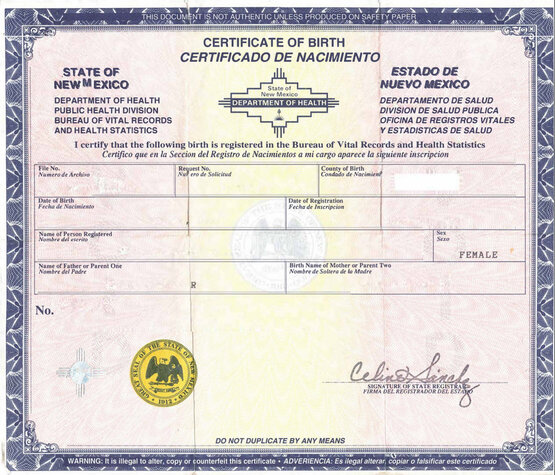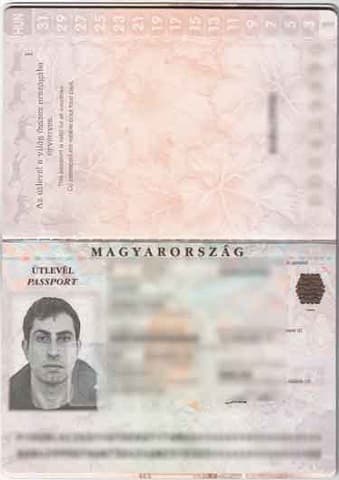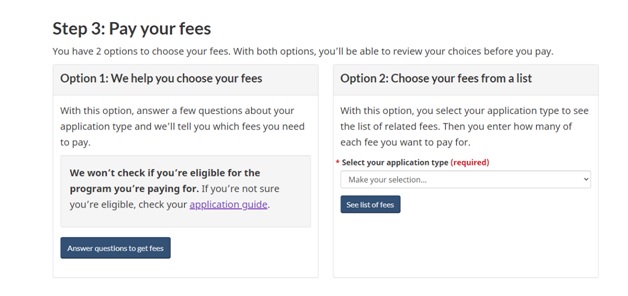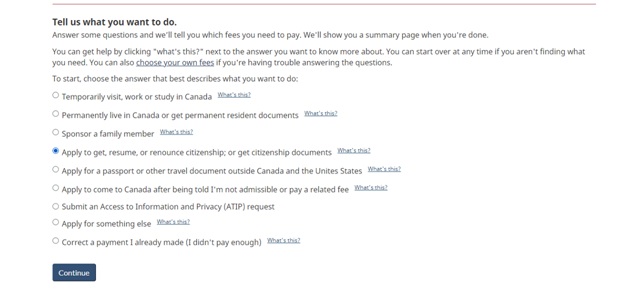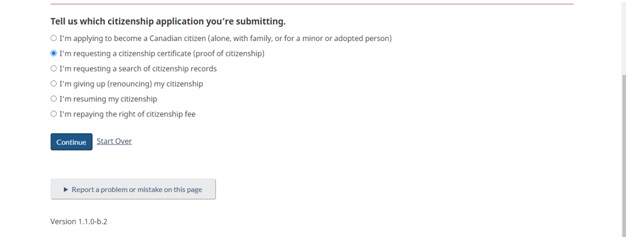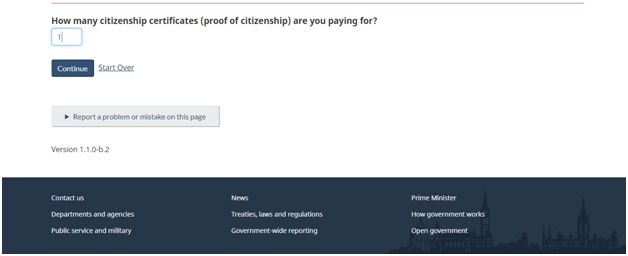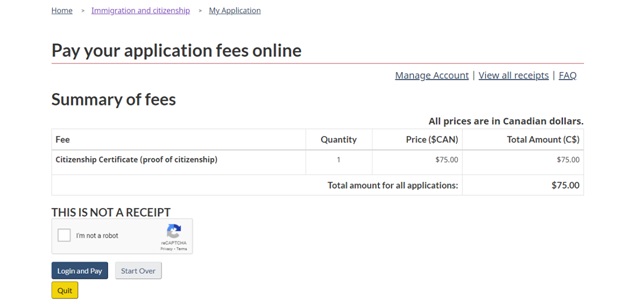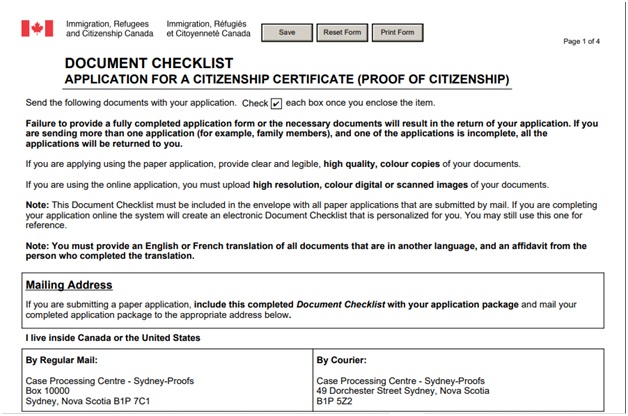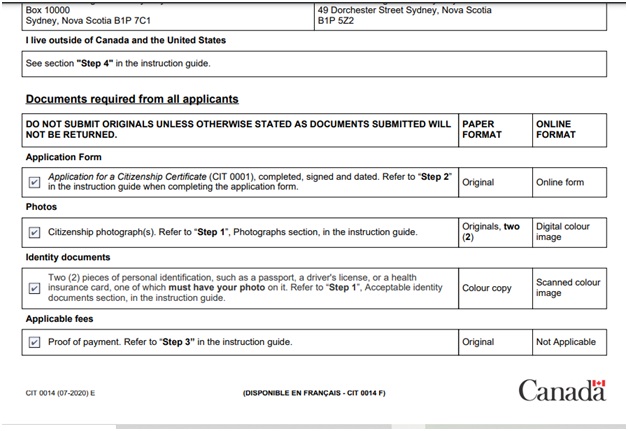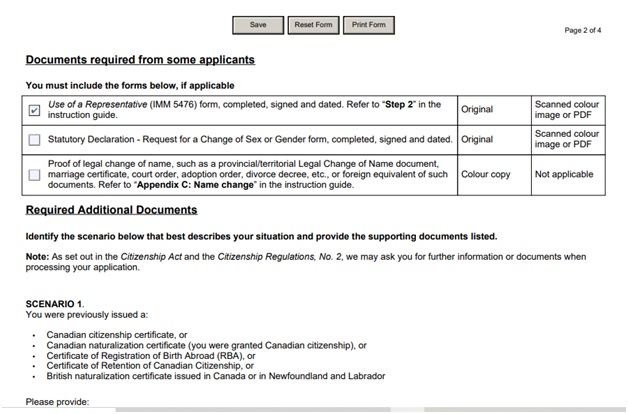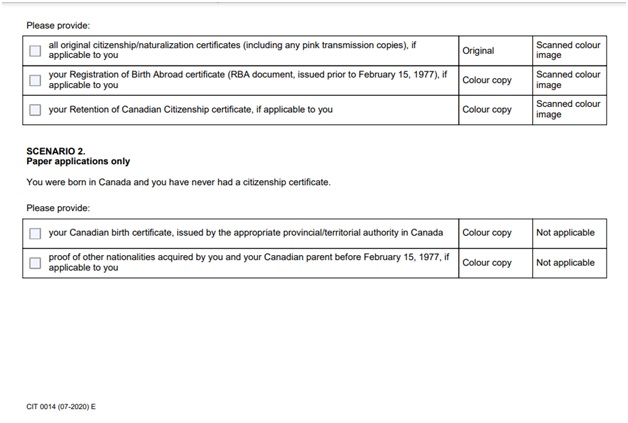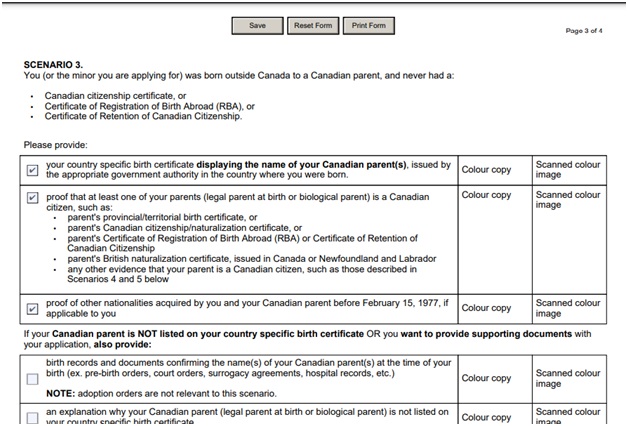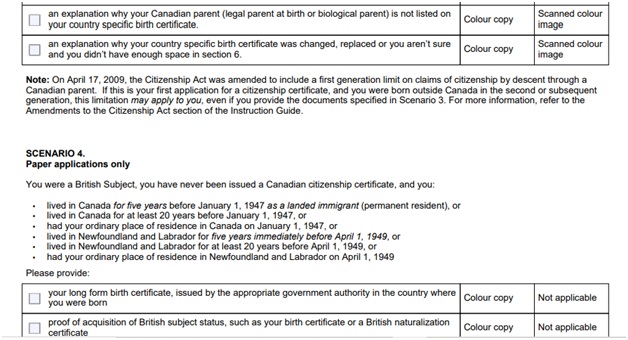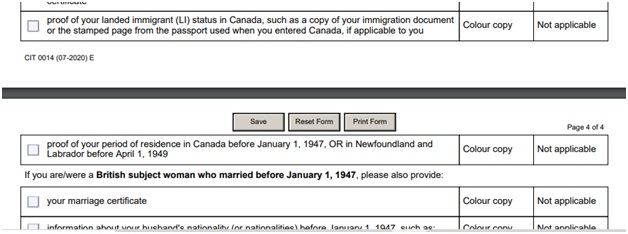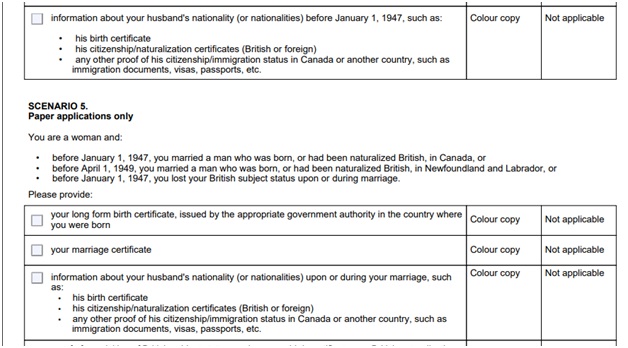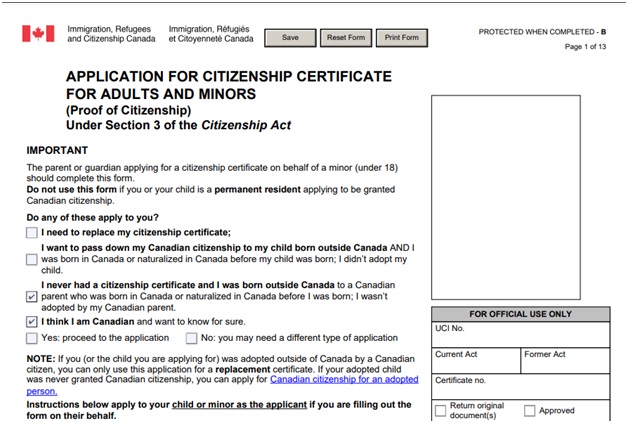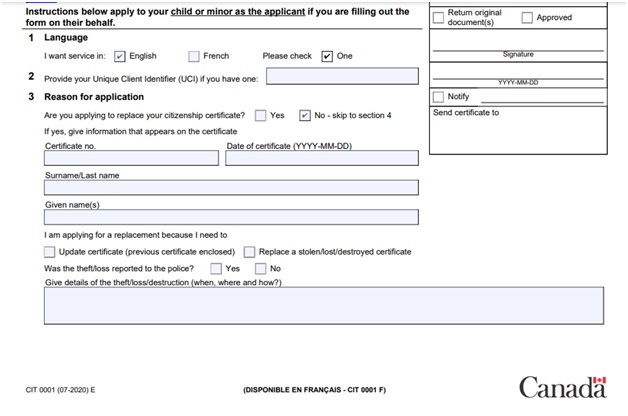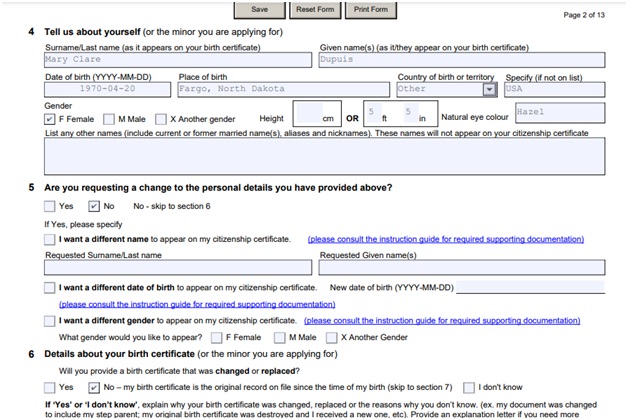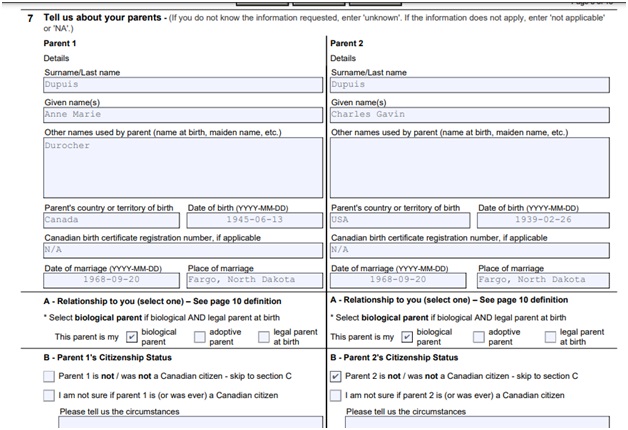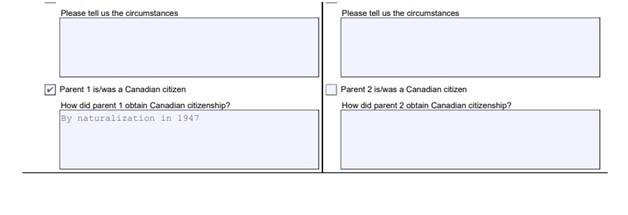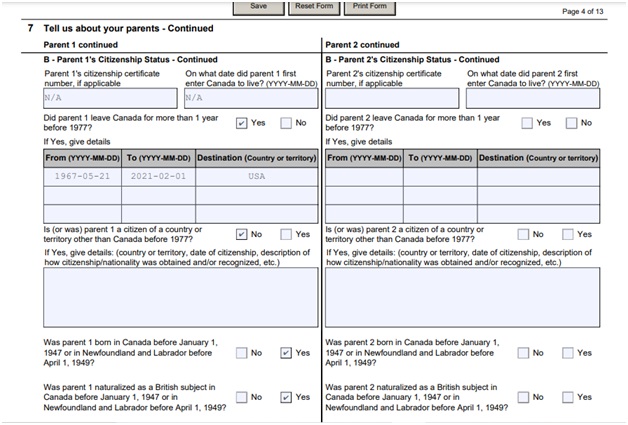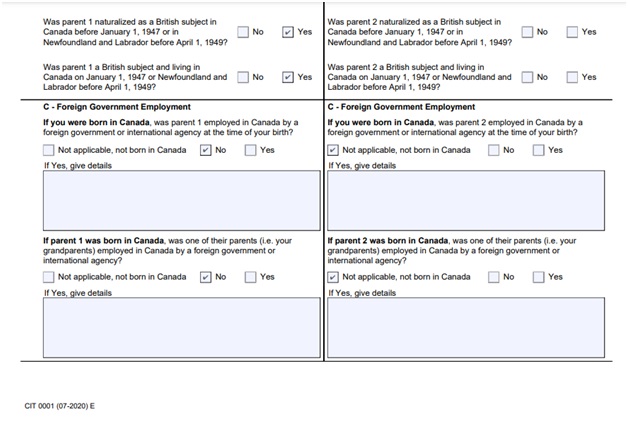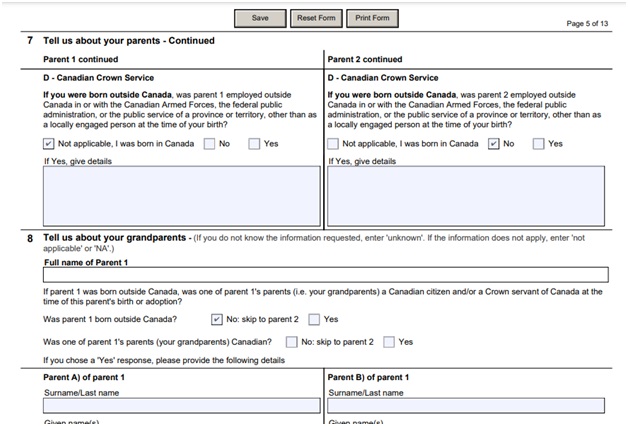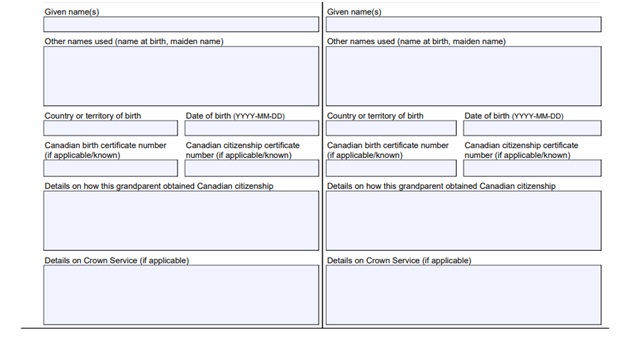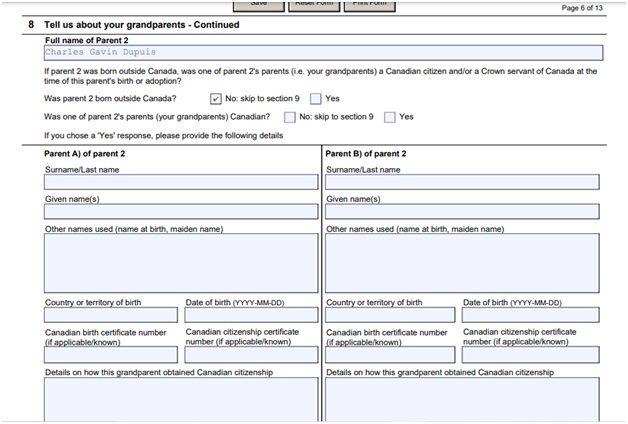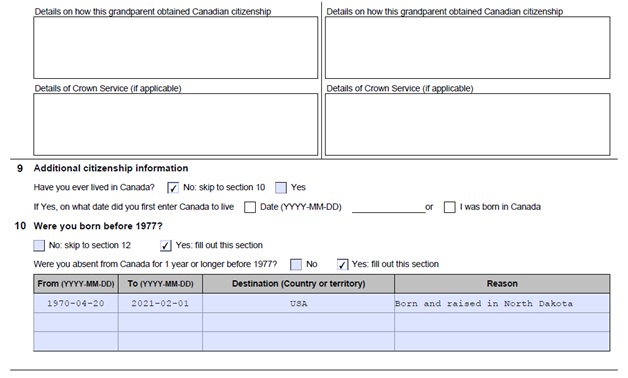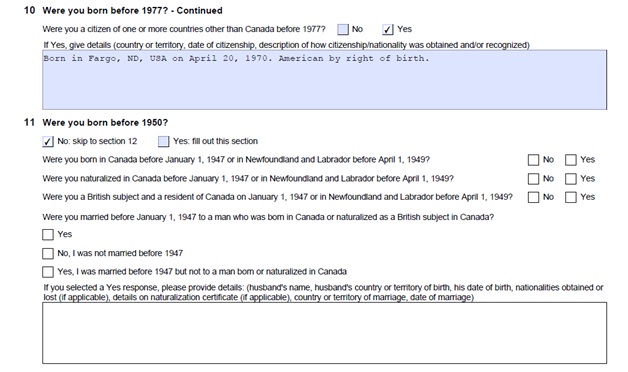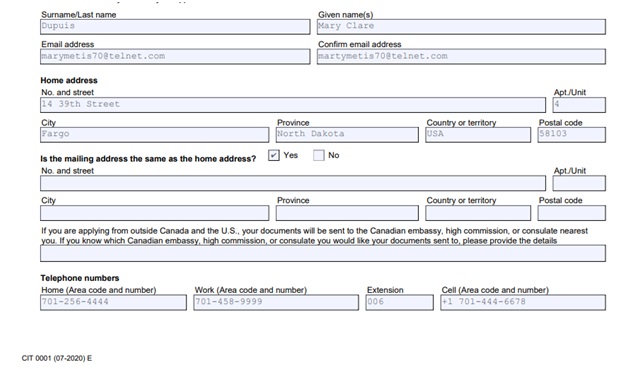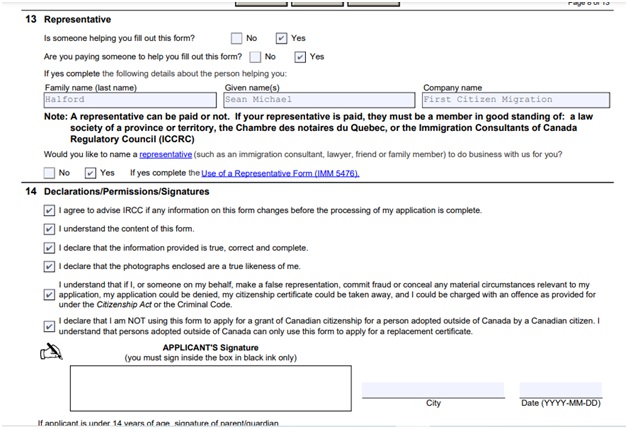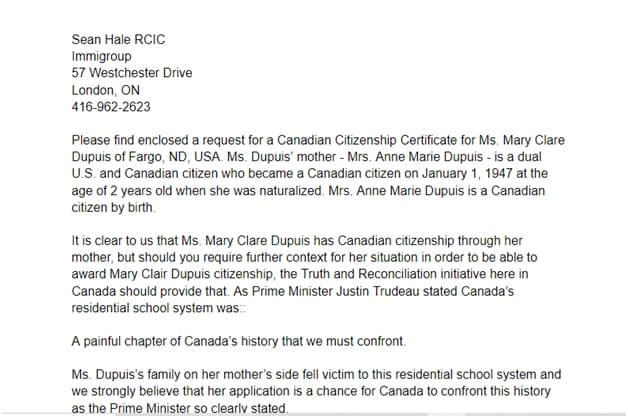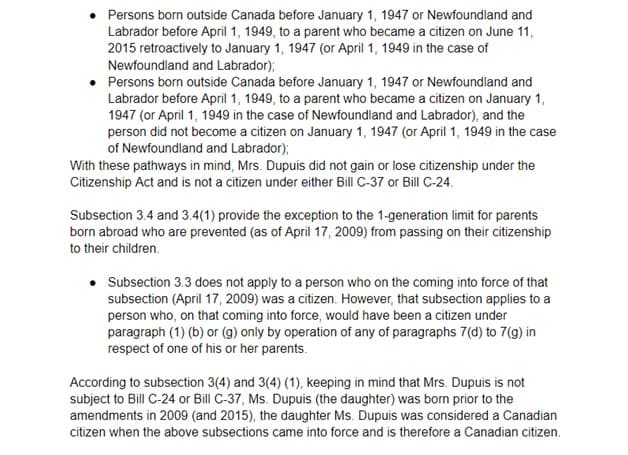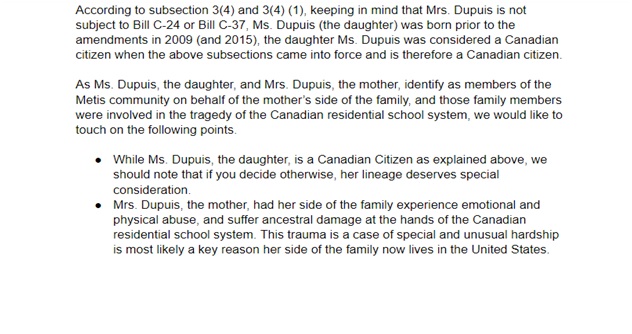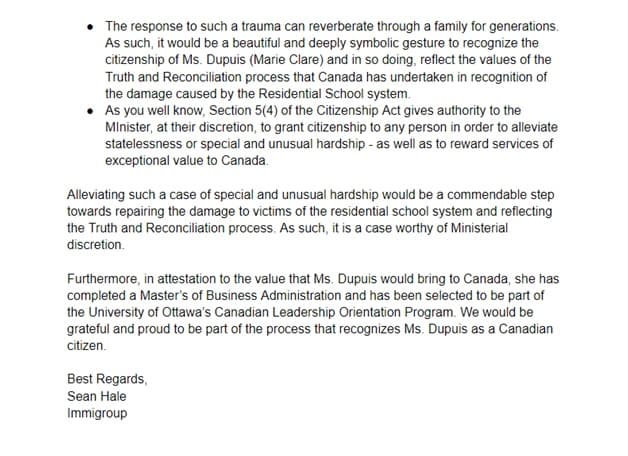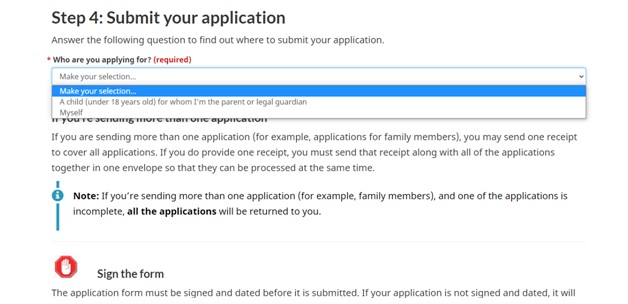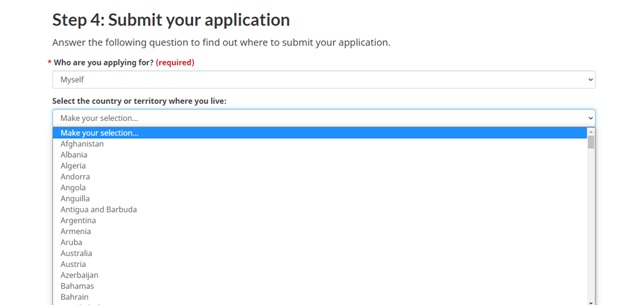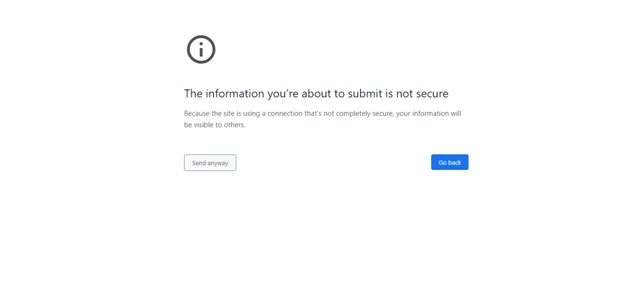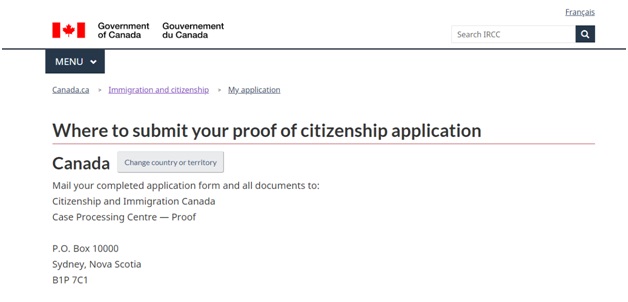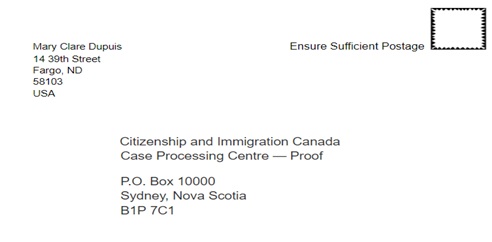Canadian Citizenship by Descent Course: How to Fill Out CIT 0001 Application

How to Fill Out the CIT 0001 First Citizenship Certificate Application when claiming Canadian citizenship by descent
Citizen by descent and how to fill out the application
Click here to download your Application for Citizenship Certificate – CIT 0001 (07-2020) E
Find out if you are eligible for a Canadian Passport & how to fill out the correct application form
Do you suspect you might have Canadian citizenship but are unsure if you do?
Because Canada’s Citizenship Act has been amended multiple times it may be a little difficult to understand if you might be a citizen of Canada. For a vital question like this, it’s best to do all you reasonably can to find the answer to the question:
Am I a Canadian and I just don’t know it?
To find the answer to that question, you need to go through a staged process at the end of which you may be able to apply for a Citizenship Certificate (proof of Canadian citizenship). Please note that this is not the same as applying for citizenship. They involve two different application forms dealing with the two distinct situations:
- Citizenship Application: uses form CIT 0002 which is used by Permanent Residents of Canada who have completed the Physical Presence requirements along with other requirements like the citizenship test which is generally taken after you have submitted your application and received your acknowledgement of receipt letter (AOR). This is NOT the application form we will be looking at in this tutorial. Don’t confuse it with the following form:
- Application for Citizenship Certificate for Adults and Minors (Proof of Citizenship): uses form CIT 0001 and is for people who wish to have official proof that they are indeed Canadian citizens. This is the application form we will be analyzing in this how to article.
This article will:
- Evaluate if you’re eligible for a Canadian Citizenship Certificate and as a result whether you can get your Canadian Passport;
- Guide you through completing your application step by step;
- Outline key definitions;
- Explain what you need to complete the application package (from printers to email addresses to credit or debit cards);
- Show you sample completed applications and supporting documents;
- Give a realistic estimate of the completion time you can expect to face;
- Cover some useful FAQs and Troubleshooting Tips.
Ready? Let’s get started.
So, which form do I use to apply for proof of citizenship and get a citizenship certificate?
It is this second application form – CIT 0001 – that you should use when seeking official proof of your (suspected) Canadian citizenship. NOT form CIT 0002.
Let Immigroup do most of the work for, click here to download our simplified citizenship certificate application kit.
We keep it simple, review, clean up, and track your application
What kind of jargon should I be aware of when claiming Canadian citizenship by descent? Key definitions
Before we outline the process for you, keep in mind the following definitions. They will help you provide accurate and complete information to the immigration authorities.
- certificate of citizenship: a certificate of citizenship issued or granted under this citizenship Act or under the former citizenship Act (certificat de citoyenneté);
- certificate of naturalization: a certificate of naturalization granted under any citizenship Act that was in force in Canada at any time before January 1, 1947 (certificat de naturalisation);
- certificate of renunciation: a certificate of renunciation issued under this citizenship Act (certificat de répudiation);
- child: a biological child but now also includes a child adopted or legitimized in accordance with the laws of the place where the adoption or legitimation took place (enfant);
- citizen: a Canadian citizen (citoyen);
- citizenship: Canadian citizenship (citoyenneté);
- citizenship judge: a citizenship judge appointed under section 26 of the citizenship Act (juge de la citoyenneté);
- common-law partner: a person who is cohabiting (living together in the same place) with another individual in a conjugal relationship, having so cohabited for a period of at least one year (conjoint de fait)
- Court: the Federal Court (Cour);
- former Act: the Canadian Citizenship Act, chapter C-19 of the Revised Statutes of Canada, 1970 (ancienne loi);
- Minister: an MP who is member of the Queen’s Privy Council for Canada as is designated by the PM as the Minister for the purposes of the citizenship Act (ministre);
- minor: a person who has not attained the age of eighteen years (mineur);
- prior legislation: any citizenship Act respecting naturalization or citizenship that was in force in Canada at any time before February 15, 1977 (législation antérieure).
Okay, so how do I go about the process of applying for a citizenship certificate, seeing I suspect I indeed am a Canadian?
Now with those definitions in mind, let’s go through the process of applying for a citizenship certificate. Here’s what we’ll go through next in detail in this step-by-step guide:
- How to find out if you qualify for a Canadian Certificate of Citizenship
- How to put together your application with examples of the forms and documents you may need
- Making sure you have the correct application – applying for citizenship is NOT the same as applying for a certificate of citizenship.
Before we start, you will need:
- A Printer and Scanner – best to have a colour printer to get that clear and sharp resolution on any scanned documents and pieces of ID that you will need.
- One 10-inch by 13-inch envelope – to send you application package to IRCC.
- Paper clips (DO NOT STAPLE your documents to your application. Attach with paper clips instead.)
- A Courier Service that offers tracking.
- A valid email address with a functioning internet connection for your computer.
- A pen to fill in the paper application or at least to sign and date your application if you’ve filled in your forms online before printing them.
Step 1: Am I Canadian tool
Go here to use this IRCC tool to see if you are Canadian. Do NOT give up if the tool tells you that you are not a citizen. Remember, this is not an official yes or no.
To get an official answer, you have to actually apply for a Citizenship Certificate as explained below. Only applying for a Citizenship Certificate will officially tell you whether or not you are a Canadian citizen. This leads to step 2 just below.
When going through step 1, keep in mind that your country of birth/citizenship may not accept dual nationalities. And even if they do, you likely have to use one nationality to leave and enter your home country and then use your Canadian passport to enter Canada. (After you apply for and get your citizenship certificate you should immediately apply for your passport – that’s the whole point, to have that Canadian passport ready to use whenever needed.)
In today’s world if you can get a second passport, you’d better take it. Having a plan B is just logical, EVEN IF YOU NEVER USE IT. If you wanted a bargain-basement-priced passport to buy outright expect to pay $100,000.00 and get a second-tier passport in the Caribbean. Think twice about making this your plan B. While Caribbean Island nations are tropical and beautiful to visit, living and working there can be far trickier unless you’re a wealthy expat who has his wine and exotic foods airlifted in every morning.
If anyone offered me a passport and all I had to do was fill out one important application package and it would cost me $1000.00, rather than $100,000.00 I wouldn’t hesitate. TAKE THE OPPORTUNITY NOW!
While the USA has been through tougher times in the past and survived and prospered, the current situation is troubling. Something is really brewing, and no one can clearly articulate what tomorrow will bring. So why think of Canada? As they sing in South Park – Blame Canada! They’re not even a real country anyway!
Well as a matter of fact …
Canada is not that important on the world stage (as much as this might annoy Canadians to hear) but this is actually our strength. Others not paying too much attention to us can generally be a blessing. And a Canadian passport can be a very, very useful document to have when travelling the world.
Step 2: Start the Process to Apply for a Canadian Citizenship Certificate
This is not the same as applying for citizenship as this application assumes you are already a Canadian citizen. In other words, if your application for a citizenship certificate is accepted, then you are indeed a citizen and you will receive a Citizenship Certificate at the end of the process, rather than having to go through all the additional steps a person with PR status who is aiming for citizenship does.
Here’s how to go about this:
Your Citizenship Certificate will cost you CAD$75.00 (see how to pay fees below).
You are eligible to apply if you apply for one of the following reasons:
- You wish to pass on your Canadian citizenship to a child born outside of Canada.
- You need a document that proves your Canadian citizenship.
- You want to make sure you’re a Canadian citizen.
- You wish to replace a lost, stolen, or damaged certificate.
- You want to update your certificate, for example if you get a name change.
Do NOT apply directly for a certificate through this process if you’re applying for a grant of Citizenship. That is, if you have obtained your permanent residence and have spent the required time physically present in Canada and have complied with all the other requirements of applying for citizenship. In that case, assuming you successfully apply for citizenship, you will automatically receive your citizenship certificate.
Step 3: Make Sure You’re Eligible
Supporting documents and eligibility:
- If you were born in Canada it’s usually a simple case of obtaining an official copy of your birth certificate.
- If you were born abroad, at least 1 parent – biological or legal parent at time of birth – must:
- Have been born in Canada, OR
- Have been naturalized as a Canadian citizen (successfully applied for citizenship after their permanent residency) before your birth.
This means that only 1 generation can pass on their citizenship to children born abroad as of April 17, 2009.
This also means that as, of July 2020, non-biological parents can pass on their citizenship to their child (as long as those parents were either born in Canada or are naturalized citizens) and as long as they are the legal parent at the time of birth.
However, in the case of adopted children who have been born abroad, you have to apply for their citizenship. You cannot merely apply for a certificate. It involves a 2-stage process where Canadian authorities verify the parent’s citizenship and then determine if the child is eligible for citizenship.
This involves ensuring the parent was either born in Canada or is a naturalized citizen. However, there are exceptions to this requirement:
- The parent was employed abroad by Canada’s Armed Forces, the Federal Public Administration, or a Provincial/Territorial Public Administration when the adopted child was born. OR
- The parent who was born abroad was born to parents (the adopted child’s grandparents) who were employed by one of the same institutions (Armed Forces, Federal Public Administration, or Provincial/Territorial Public Administration).
Please note that these exceptions apply to any Canadian born abroad who wishes to pass on their citizenship to a biological child of theirs who is also born abroad, not just to adoptive cases.
Note: If the adoption took place before January 1, 1947, then one of the parents must have become a Canadian citizen on January 1, 1947, or on April 1, 1949 if they were in Newfoundland & Labrador.
Please note that a minor child (less than 18 years of age) can apply on their own for a citizenship certificate, but it is advised that the parents countersign and supervise the process, especially if the minor is less than 14 years of age.
Let Immigroup do most of the work for, click here to download our simplified citizenship certificate application kit.
Step 4: Find out what Supporting Documents & Forms You Need to Claim Your Canadian Citizenship
Go here to see what you need for your application package including form CIT 0001 Application for a Citizenship Certificate. Your application package generally includes:
- Instruction Guide for form CIT 0001
- Document Checklist – CIT 0014
- Application for a Citizenship Certificate (adults and minors) – CIT 0001
- Citizenship Photo Specifications (print and present to a professional photographer)
- Use of a Representative – IMM 5476
It also can include the following if needed:
Do not forget Immigroup is here to help you through this process. Just download our simplified kit, fill it out, and email it back to us for a review. We will file the application for you and track the progress. To learn more click here.
- Immigroup have done more citizenship certificate applications than any other firm in the world.
- In business since 2004.
- Immigration in Canada is a regulated industry so only licensed immigration practitioners will be representing you.
Make sure if you are doing this application yourself that you
- take your time and do it very carefully;
- be careful: being mostly accurate at best – rather than getting all the details right – will slow down your application processing time to screeching halt or it will be refused; these refusal letters usually come 5 to 12 months after you have sent the application.
Read more about this in our FAQ section at the end of this guide.
For example, we have noticed some interesting patterns with this type of application.
Over 40% of the calls we get are people scratching their head trying to track down their application. Usually on our end we ask one simple question that pretty much tells us what we can do to help: when did you file the application?
Anything over 10 months is an indication that it may be better to refile that application.
Other questions we ask:
- Did you keep a copy of the application?
- Do you have the tracking information?
- Can you login and see the status of your application/or/did you get any communication from IRCC?
If you are using Immigroup you don’t need to worry too much as far as reading this guide in great detail. Our simplified guide is a lot more forgiving. It will be our job to clean everything up before filing your application. Click here to start now by completing the Canadian citizenship by descent application kit.
Before we move on to how to pay your fees online, let’s take a look at some samples of the documents you may need for a Proof of Citizenship application (CIT 0001):
Photo ID: Driver’s License
Photo ID: Canadian Health Card
Long Form Birth Certificate (translated into English if necessary)
Passport (biographical page showing biographical information page and photograph)
Step 5: Find out How to Complete Your Citizenship Certificate Application including Paying Your Fees Online
The steps you need to take to complete your application are as follows:
- Read the instruction guide: It is especially useful for knowing, what documents you need and how to fill them out, as well as the correct mailing address to send your package to. Go here to see the guide.
- Once you’ve read the guide, download the forms, fill them out, and then sign and date them. As the guide is for applications on paper, you may wish to print everything once it has been filled out online or print the forms and then fill them out.
- Pay your fees. The guide has Step 3 dedicated to paying fees. The fee is CAD$75 per person applying. You have to pay the fee online. You will need:
- A valid email address
- A printer to print out the payment receipt (VERY IMPORTANT)
- A valid Credit Card or valid Canadian Debit Card.
How to Pay Your Citizenship Certificate Fees
- Scroll down to Step 2 to make sure your Credit or Debit Card is valid.
- Go to Step 3 next. You will see this:
You can choose either option. Let’s say you choose Option 1 just to be on the safe side and click the Answer questions to get fees button on the Left Hand side of the webpage. Here’s what you’ll get sent to:
Select the citizenship documents options shown in the image directly above. Then click on the Continue button which will take you here:
Select I’m requesting a citizenship certificate (proof of citizenship) option in the menu.
That leads you to this next page where you let them know how many people you are applying for to get a certificate. Seems simple but if you forget how many people are applying for certificates and therefore get the fee wrong, your application will be delayed or sometimes even returned:
Next we have the step that often causes applicants to make a very frustrating mistake. The next page you are sent to IS NOT THE OFFICIAL RECEIPT. It is merely a page that confirms what your total fee payment is so can then Log in and pay the correct fee. That’s the blue button in the bottom Left Hand corner of the page. See it? The blue Login and Pay button? Click there to log in and pay your fee.
Once you have done this and PAID your total fees, then you will see the official receipt. This is what you should print BEFORE YOU LOG OUT. Print at least TWO copies. One for your records. And one to send with your application package.
Review these steps again and make sure you’re familiar with these steps. Getting the payment right seems like a trivial thing but it can cause headaches and delays if you don’t take those 10 minutes to get it right.
Step 6: Your Document Checklist – Use it & Make Sure You Have Everything Listed
Having done all this, let’s now take a look at a completed application, starting with the Document Checklist – CIT 0014:
Where you send your application:
Documentation required:
Documentation required for specific circumstances:
More documentation required for specific circumstances:
More documentation required for specific circumstances:
More documentation required for specific circumstances:
More documentation requirements for specific requirements:
Yet more documentation requirements for specific circumstances:
The last of the documentation requirements for specific circumstances:
Step 7: Filling Out your Application Form CIT 0001
Ok, that’s your Document Checklist which is your guide to make sure you’ve included everything. Now it’s time to look at a completed application form CIT 0001:
Example of Form CIT 0001 for Proof of Citizenship
Warning: Do not simply copy the fields (boxes) that were checked in our example. Read carefully to see what applies to your situation.
The reason for your application:
Your personal details:
More detailed information about you (or your child):
If applicable, explain why your birth certificate was changed:
You must provide information about your parents (or you, if the application is for your child) in order to prove your claim of Canadian citizenship:
And you have to explain how they (or you) became Canadian citizens:
More information about the parents:
More details about the parents:
More information about the parents and information about grandparents (if applicable):
Grandparents’ information (if applicable):
More information about the grandparents (if applicable).
The end of the grandparents’ information section and information about the applicant (you or your child):
More information about the applicant (you or your child):
Contact information:
Your contact information:
Your representative’s information (if applicable) and your declaration:
The rest of CIT 0001 is instructions and reminders. Do give that part of the application form a look and review it just to be sure you haven’t left anything out.
Step 8: Getting Your Citizenship Photographs & Other Personal ID Right
As well, make sure you have photographs required supporting documents including:
- Completed CIT 0001 – we’ve shown you a form above
- 2 citizenship photographs – let’s get into a little more detail here:
- Look at the following photographs:
- Your face needs to be:
- Squarely facing the camera
- Neutral in expression (no smiles, frowns, etc.)
- With your mouth closed;
- Your photograph must:
- Be taken by a professional photographer
- Have name (photographer or studio), address, and date on back
- Be printed on quality photographic paper
- Have your name printed on the back
- Have been taken within the last 6 months
- Be clear, well-defined, with white or light background
- Have a frame size of 50mm x 70 mm (2” x 2 ¾ “)
- Your head from chin to crown should measure between 31mm (1 ¼ “) to a maximum of 36mm (1 7/16”)
- The crown of your head is the top of your skull, not the top of your hair;
- You should:
- Not be wearing sunglasses
- Only wear clear prescription glasses that do not hide your face
- Wear headgear that does not hide your full facial appearance
- If your 2 citizenship photographs do not meet these specifications, you will be asked to provide 2 new ones that do. So, get it right the first time, even if it means driving your local photographer a little crazy.
- Look at the following photographs:
- 2 personal identity cards, with at least one of them including a photo (passport, driver’s license, healthcard – see examples above)
Step 8(a): Did you include your Printed Receipt??
Your proof of payment of fees (receipt you print after paying online as explained above) has to be included in your application package. It must be for the correct amount (or be more than the correct amount in which case you will be refunded the balance).
If you get sloppy and pay less than your total fees OR forget to include the printed receipt, your application will not be accepted.
Take a minute or two when calculating your total fees – as we explained above – and take 30 seconds before sealing your envelope to make sure your receipt is included.
Step 9: Additional Documents/Forms you might have to include
You may also have to include:
- Completed form IMM 5476 (Use of representative) which you’ll have to do in this case because you are indicating that you will be using a paid representative. (If a family member or parent is helping use the IMM 5475 form instead.)
- Statutory Change of Gender/Sex form (see above) if applicable.
- Legal Change of Name (see above) if applicable.
- Letter of Explanation (LOE) – this is not listed in the document checklist but is a fundamental part of any successful application for a certificate of citizenship. We’ll provide an example and analysis below.
Let Immigroup do most of the work for, click here to download our simplified application kit.
We keep it simple, review, clean up, and track your application
Step 10: Getting your Letter of Explanation (LOE) / Summary Letter Right
Now let’s look at a sample Letter of Explanation (LOE). This is where you put your various bits of information into a coherent and convincing narrative that pulls together all the elements of your story.
A well-written LOE will definitely help convince an immigration official of the validity of your citizenship. If your reasoning and evidence is weak, of course, an LOE will not change anyone’s mind. But in a case with a reasonable chance of success, it could be a key factor for getting your application approved.
If you need help in cleaning up your Letter or Explanation or creating one for you, please contact Immigroup and let us see what we can do. Alternatively, just do the entire citizenship certificate process with us, not just the LOE. Click here to start.
Letter of Explanation / Summary Letter Sample (FOR ILLUSTRATIVE PURPOSES ONLY)
As you can see from this sample LOE, requesting a Certificate of Canadian Citizenship can sometimes be a very complex affair given the various amendments to Canada’s Citizenship Act over the years. Sometimes, you really do need someone with the knowledge and experience to pull together the information in your case and present it in a convincing way to authorities.
Please note: Most people do not file a Letter of Explanation (LOE). It is not even asked for in the instruction guide for form CIT 0001. We are giving you an inside view how Immigroup take things to the next level and there will indeed be times when you will also need to do this.
Here is the reason when you need to compile a Letter of Introduction (LOE).
- Don’t use an LOE in straightforward cases (i.e., my mother was born in Canada, so I am Canadian – LOE not needed).
- Use an LOE in a more complex case that has somewhat more ambiguous evidence as to whether you, or the person you are applying for, are Canadian.
- Use an LOE for requesting urgent processing (work, school or another good reason).
Tip: One final insight to LOEs and perfectly-put-together applications, they process a lot faster!
Here is why. The applications that your immigration case officer gets from the general public… Well how do I say this nicely? They are usually disappointing, not to say frustrating and confusing.
Now here comes your application: clean, with paper-clipped supporting documents, color copies of all supporting documents, and a convincing, professionally written LOE.
Imagine yourself as a case officer in a cubicle in an IRCC processing centre somewhere in Canada with a stack of complex, poorly-organized applications to go through. When it comes to this well-organized and completely documented application, it will take this case officer a fraction of the time to complete your application. You could call it de facto urgent processing.
Step 11: How to Make Sure You Mail Your Citizenship Certificate Application to the Correct IRCC Address
Mailing your citizenship certificate application:
To find out the correct address, go to Step 4 in the guide and select the correct options for:
- Who are you applying for?
This is what you’ll see:
In this case, we’ve selected “Myself.”
You will then have to select the country where you are living from a drop-down menu:
Your mailing address will depend on how you answer this question. Let’s suppose you are applying for yourself (select “Myself”) and you answer that you are in Canada. Here’s what you will see next:
Click on Send anyway and you’ll finally have your correct mailing address.
In this case (having selected Myself & then Canada) you’ll see:
You can now review your document checklist and make sure your application is complete and then send it in to the address you see by following the above steps. Just like the fee payment, getting the right address might seem obvious. But if you get it wrong, your application will end up in an administrative purgatory which can cause endless delays, or which might even force you to start all over again.
Step 12: Is Your Envelope Addressed Correctly & With Sufficient Postage?
Finally, here’s how the envelope you send your package in should look like. Remember to find the correct address as we explained above.
Now just a few more extremely important steps:
- Make copy of every page of your application.
- If sending it by mail, use a courier with tracking. (We advise you to not ask for a signature as this may complicate delivery of your package at the IRCC Case Processing Centre.)
Tracking your application process:
Read this article: Tips and tricks for checking your IRCC (CIC) application status
Tip: It’s normal for your application not to have any update for the first 3 to 4 months. You have to be patient for those first few months.
Request for urgent processing
Technically there is no such thing as urgent processing, officially speaking, But here at Immigroup we have been testing this out to see if there are not any exceptions to this rule. Here is something to consider:
Unfortunately, this topic requires a separate tutorial/blog which we should have you sometimes in the near future. But, if you are thinking of going to school in Canada or getting a job with a Canadian employer, urgency processing should be tried.
You will need to submit a summary letter but in simple terms, a summary letter is a way to explain your case to the immigration officer in their language and rules.
Think of it as a way in which you are doing their job for them, by letting them know why you qualify for urgency, and nailing every point. Personally, if you need this done fast, you will need to simply hire a professional to increase your odds of this working out in your favor. Again, it may or may not work but when you need it fast and you have a good reason, you really need to go the professional route rather than hurriedly putting something together yourself.
That’s it! You’ve put together an application package for a Canadian Citizenship Certificate using CIT 0001 (NOT CIT 0002). Good luck!
Troubleshooting and FAQs
So here is the big question ‘Do you have ONE Canadian Parent?’, I don’t care if he was a one-night fling with your mom in Woodstock, you have Canadian citizenship. So, you need to fight for that Canadian Passport. Get that certificate of citizenship! Then get your passport!
The processing time for citizenship certificates is 6 to 8 months. Is this accurate?
Yes, anything longer and there is most likely a problem with your application
When can I check that status of my citizenship certificate application?
Tacking your application by courier is not a form of tracking, just an indication it made it in the mailroom.
You will need to login to the IRCC tracking system to see the progress of your application. It is normal for your application to sit in the mail room for 3 months. It is not normal to wait a year and not get any correspondence.
Can I expect a phone call from the government if they need clarification?
Tip: No, the government does not call you on your phone and ask you to clarify something in your application. You will need to login, maybe call (if you can), or sometimes you will get an email or written letter. Please note that letters from the IRCC are mostly templated so do not expect anything personalized.
I need my citizenship certificate application processed quickly, what tip can you give?
First of all, officially speaking there is no urgent processing with this application. With that said, you can and should make a request, especially when your reason for urgency is on solid ground. If you have a lot to lose, just spend the extra money and get us at Immigroup to do this for you.
How easy is it to check my citizenship certificate application status?
Well, it’s a government system so give it to them in the name of security not to be friendly but that said because you now have a complete copy of your application you will be just fine (just breathe deeply).
Some countries don’t allow dual nationalities, right?
- Africa – Most African countries, including Nigeria, Ghana, Senegal, Ivory Coast, Morocco, Kenya, Angola, Uganda, and Zambia, allow dual citizenship. However, there are exceptions.
- Australia & New Zealand – allow dual citizenship with restrictions on holding office.
- Bangladesh – allows dual citizenship with restrictions: only non-residents who were not citizens of the South Asian Association for Regional Cooperation (SAARC): India, Pakistan, Bangladesh, Sri Lanka, Nepal, Afghanistan, Bhutan, the Maldives. That means dual citizenship is allowed for Bangladeshi-Canadians.
- Brazil – like Canada, Brazil has some restrictions on birthright citizenship for children of diplomats and other foreign government employees but does allow dual citizenship.
- Bahrain, Qatar – Do not allow dual citizenship.
- China – Nationality Law of People’s Republic of China: Article 3: The People’s Republic of China does not recognize dual nationality for any Chinese national. However, Article 5: Any person born abroad whose parents are both Chinese nationals or one of whose parents is a Chinese national shall have Chinese nationality. But a person whose parents are both Chinese nationals and have both settled abroad, or one of whose parents is a Chinese national and has settled abroad, and who has acquired foreign nationality at birth shall not have Chinese nationality.
- Cuba – Cuba does not allow dual citizenship.
- Egypt – Egyptians who acquire another nationality must inform the Egyptian government and the other country must allow dual citizenship for them to be able to keep their Egyptian citizenship.
- Estonia – Has de facto dual citizenship as Estonians cannot be stripped of their citizenship, even though dual citizenship is not allowed according to their nationality laws.
- Germany & Austria – Germany recognizes dual citizenship with other EU countries and with Switzerland, and if the other citizenship was acquired by birth. For those taking citizenship from a non-EU country like Canada, you can apply for permission to retain your German citizenship. Austria is stricter with an automatic loss of citizenship for those who take up another citizenship, although permission is occasionally granted (Arnold Schwarzenegger, for example).
- Guyana & Surinam – do not allow dual citizenship
- Hong Kong & Macau – While China treats Hong Kong and Macau ethnic Chinese residents as Chinese nationals in both China and Hong Kong & Macau, they are permitted to hold dual citizenship.
- India – while children of Indian descent may hold de facto dual citizenships during their childhood if they were born abroad or otherwise naturalized, they must choose whether to hold Indian or another citizenship when they reach 18 years of age. In general, subsequent modifications to India’s 1955 citizenship law have been increasingly restrictive. However, Overseas Citizenship of India (OCI) was enacted in 2006 in response to complaints from NRI members whose children were born in countries like Canada or the U.S. and who acquired foreign citizenship by virtue of jus soli (automatic citizenship for those born in a country). OCI allows the foreign country like Canada or the U.S. to grant citizenship and recognized both citizenships but India itself does not treat an OCI holder as a true dual citizen. It’s a sort of half-way measure which allows someone to be treated as if they’re exclusively an Indian national (with rights similar to permanent residents) while in India and a dual citizen while in their country of residence like Canada or the U.S. An OCI card is not a substitute for an Indian visa.
- Israel – Allows dual citizenship except members of the Knesset who must renounce other citizenships
- Japan – In Japan, dual citizenship is forbidden, and citizenship follows the jus sanguinis principle of being hereditary. Japan is very restrictive in how it judges and awards citizenship even to ethnic Japanese in large communities abroad (like the Japanese community in Brazil for example).
- Lebanon – Allows dual citizenship
- Lithuania & Latvia – Allow dual citizenship with certain countries under certain conditions.
- Mexico – A Mexican national by birth may possess another nationality, but naturalized Mexicans may lose their Mexican citizenship if they voluntarily acquire another nationality.
- Namibia – Only allows dual citizenship to Namibians by birth or descent who cannot be stripped of their Namibian citizenship if they acquire another nationality. However, those who have acquired Namibian nationality must renounce their previous nationality.
- Netherlands – Dutch citizens can have foreign citizenship if it was obtained by birth rather than voluntarily or if they were naturalized through marriage.
- Pakistan – allows dual citizenship with Canada since 1951, having signed a treaty with 20 other countries.
- Philippines – As of August 2003, the Philippines now recognizes dual citizenship. Previous to this (specifically from legislation enacted in 1936 and modified in the 70s) Filipinos would lose their citizenship if they acquired citizenship in another country or even served in various capacities (military for example) in that country. This has now been overruled by the 2003 legislation.
- Russia – Russian law apparently does not recognize dual citizenship, nor does it recognize the foreign citizenship of its nationals.
- South Africa – South African citizens have to apply for permission from their government if they plan to take on dual citizenship. Otherwise, they will lose their South African citizenship upon taking another citizenship.
- South Korea – you are only allowed dual citizenship by birthright. If you voluntarily acquire another citizenship (become a naturalized Canadian) you automatically lose your Korean citizenship.
- Taiwan – China does not recognize Taiwan (officially called the Republic of China) and Taiwan in turn extends citizenship by blood to it’s nationals (whether Taiwanese or Chinese who have no ties to Taiwan) living overseas, giving them what is called an Overseas Chinese Passport (OCP) of the Republic of China. That means Chinese, Hong Kong and Macau nationals are all considered citizens of Taiwan. If you are naturalized in Taiwan (following age, residency, and Mandarin language requirements) you are obliged to renounce your existing citizenship. Otherwise, ethnic Taiwanese or Chinese can have dual citizenship according to Taiwan’s laws.
- Vietnam – As of 2009, Vietnam now allows dual citizenship, however Vietnamese abroad who have acquired foreign citizenship must show justified cause and have permission from the Vietnamese State President.
Please remember that there is often a big difference between what the laws says and how strictly the law is actually enforced. As you may have noticed, many countries officially do not accept dual citizenship yet, in practice, they allow work-arounds. How strictly you follow your nation’s laws on dual citizenship is up to you, of course. At Immigroup we do suggest it is always better to follow the law.
Let Immigroup do most of the work for, click here to download our simplified application kit.
We keep it simple, review, clean up, and track your application


